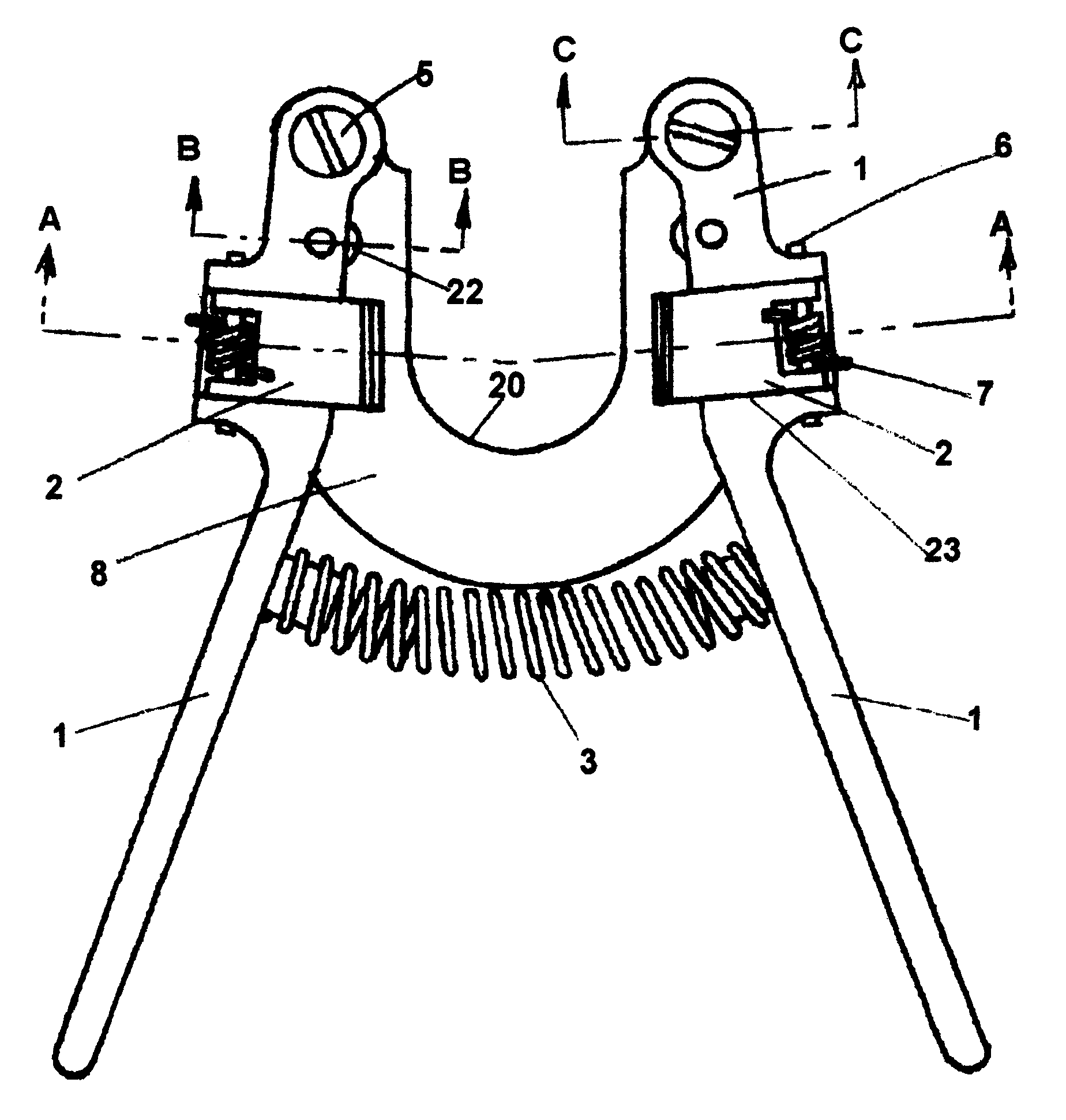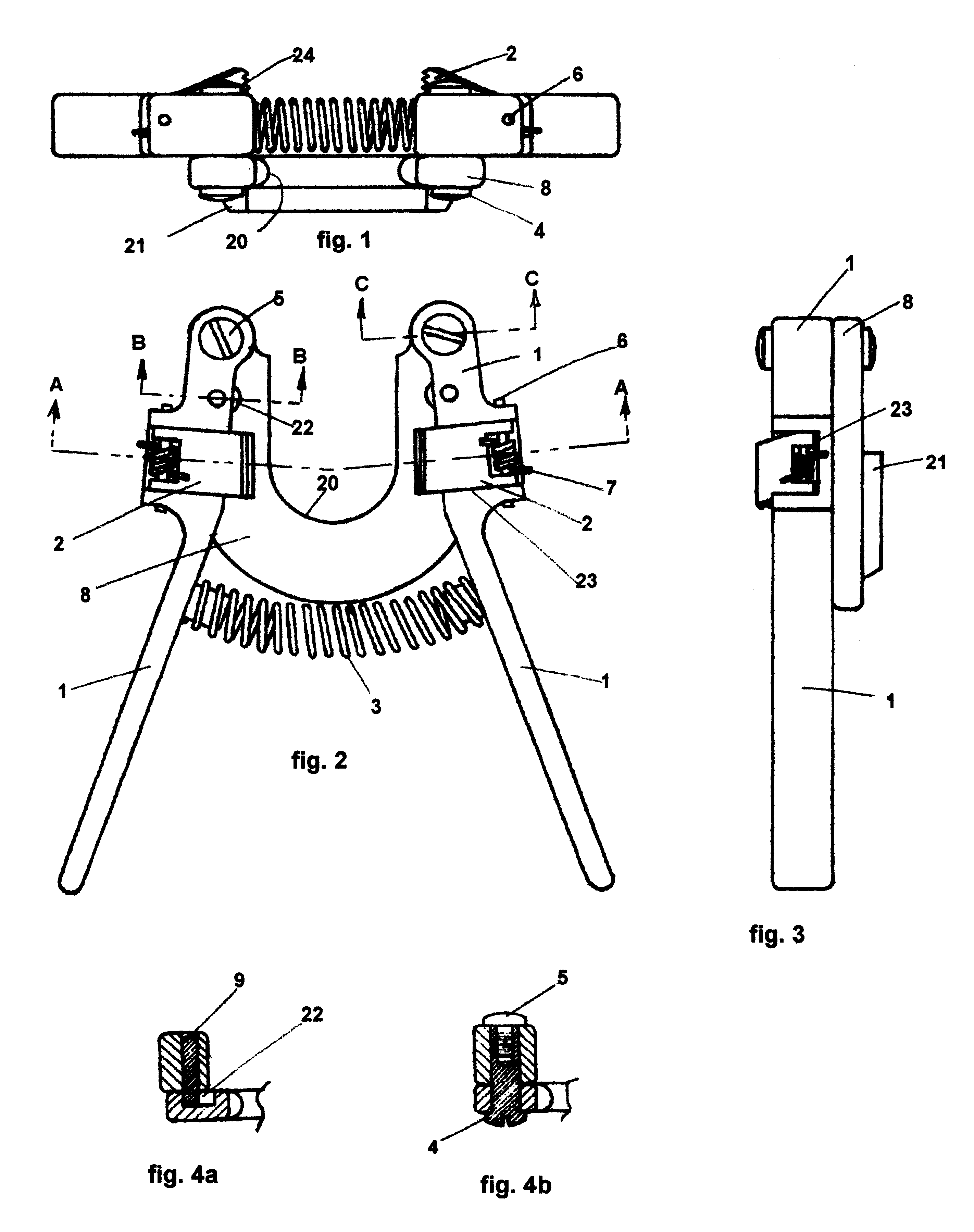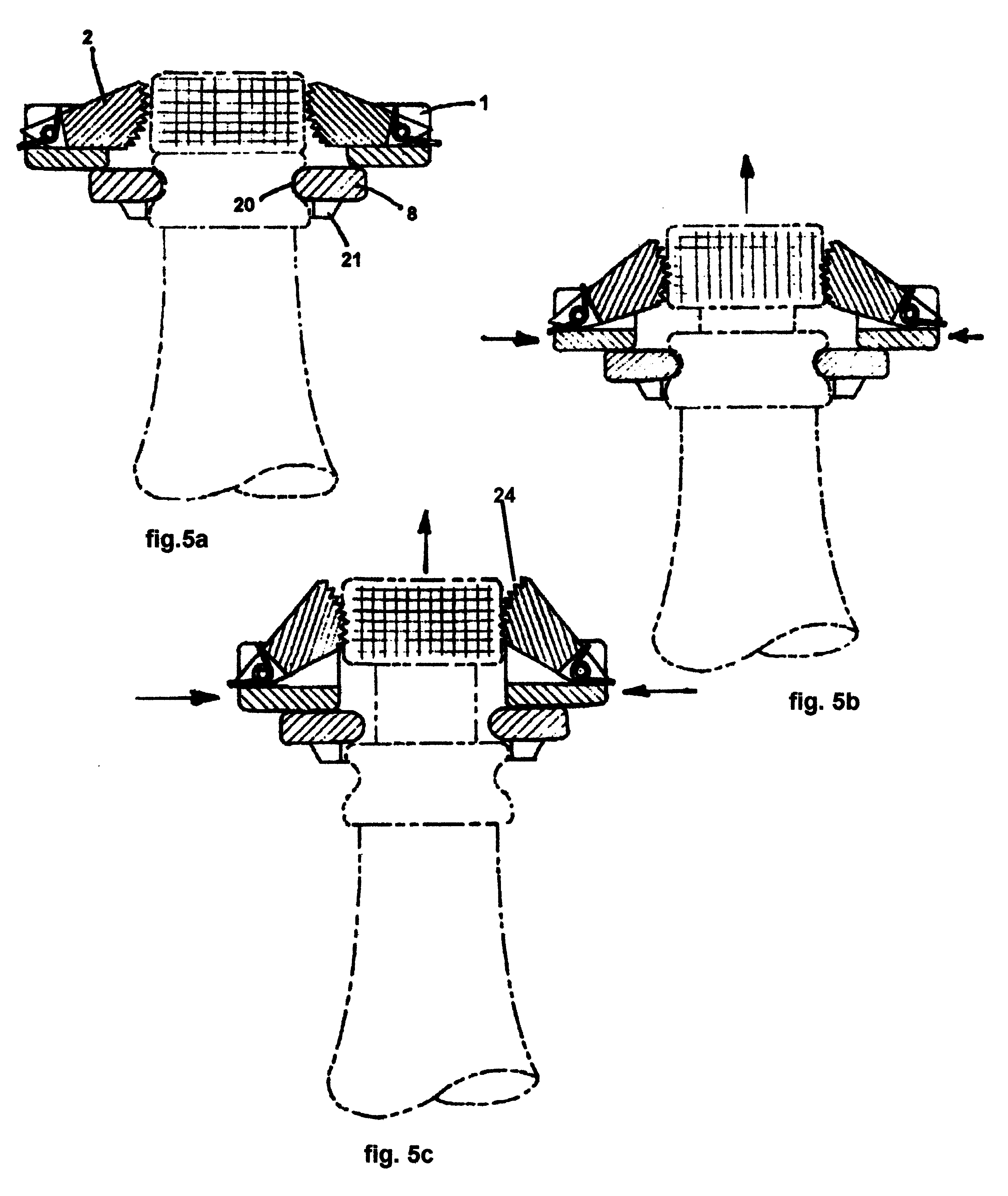Champagne cork remover
a cork remover and champagne technology, applied in the field of champagne cork remover, can solve the problems of large complex machines, affecting the work efficiency of workers, and affecting the quality of champagne cork removal,
- Summary
- Abstract
- Description
- Claims
- Application Information
AI Technical Summary
Benefits of technology
Problems solved by technology
Method used
Image
Examples
Embodiment Construction
The preferred embodiment of this invention is illustrated in the three views of FIG. 1, FIG. 2, and FIG. 3. The lever-arms 1, shown in all three views, are connected to the base plate 8, by two pivots 4 These are kept in place by fillister head screws 5. The pivots 4, are a close but loose fit into the lever-arms 1, and of a length that allows free angular movement of the lever-arms. A compression spring 3, fitted between the lever-arms 1, tends to hold them apart. Stop- pins 9, protruding through the lever-arms into the stop- pin cavities 22 serve to constrain angular movement of the lever-arms to within the comfortable manipulation range of the average adult hand. Extractor links 2, are located in channels 23, formed across the lever-arms at a point in line with the center of the radius of the U-shaped cutout 20. Thus located, the extractor links 2, are moved toward the center of the U-shaped cutout 20, when lever-arms 1, are moved together.
The U-shaped cutout 20, of the base plat...
PUM
 Login to View More
Login to View More Abstract
Description
Claims
Application Information
 Login to View More
Login to View More - R&D
- Intellectual Property
- Life Sciences
- Materials
- Tech Scout
- Unparalleled Data Quality
- Higher Quality Content
- 60% Fewer Hallucinations
Browse by: Latest US Patents, China's latest patents, Technical Efficacy Thesaurus, Application Domain, Technology Topic, Popular Technical Reports.
© 2025 PatSnap. All rights reserved.Legal|Privacy policy|Modern Slavery Act Transparency Statement|Sitemap|About US| Contact US: help@patsnap.com



